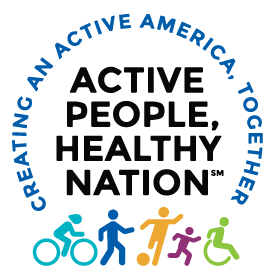Key points
- Regular physical activity is good for your heart, muscles, and bones.
- Did you know it's good for your brain too?
- Any amount of physical activity can help.

Overview
Physical activity can help you think, learn, problem-solve, and enjoy an emotional balance. It can improve memory and reduce anxiety or depression.
Regular physical activity can also reduce your risk of cognitive decline, including dementia. One study found that cognitive decline is almost twice as common among adults who are inactive compared to those who are active.
Regular physical activity can help you sleep and feel better, reduce the risk of some common cancers, and add years to your life.
You don't have to be a fitness guru to reap the benefits. No matter your age or fitness level, any amount of physical activity can help.
Did you know?
What you can do

For the most benefit, adults need at least 150 minutes of moderate-intensity physical activity weekly or 75 minutes of vigorous-intensity activity. It doesn't have to happen in one stretch. For example, moderate-intensity activity could be broken into 22 minutes daily, 30 minutes a day on 5 days a week, or smaller amounts that add up.
See a sample schedule for adults.
All adults also need muscle-strengthening activities two or more days a week. And adults 65 and older need activities to improve balance as well.
See a sample schedule for older adults.
Here are ways to be more physically active:
Turn up the music and dance. Twisting and turning can be a fun way to be physically active.
Take active breaks. Break up your sedentary time with physical activity. For example, squat or march in place between programs while you're watching television. Or stand on one leg to improve your balance.
Add physical activity to your routine. When shopping, park at the back of the parking lot and walk to the shop. Inside, walk around the perimeter of the store before getting what you need. Use the stairs instead of the elevator. Get off transit one stop sooner and walk to your destination. If you already walk routinely, start carrying hand weights on your treks.
Walk the dog. Dogs are great walking companions and can help you have an active lifestyle. One study found that dog owners on average walk 22 minutes more every day compared to people who don't own a dog. If you already walk your dog, try going a little further on your walks.
Remember that some activity is better than none, and every little bit counts. Even some chores such as raking and bagging leaves, using a lawn mower, or vacuuming can help you get active.
Get started by keeping track of your daily activities for one week with this diary. Think about times throughout the day you could be physically active. Make those times a regular part of your daily or weekly schedule. Find more tips to fit physical activity into your day with Move Your Way.
Health care providers can help
Health care providers play an important role in helping patients become more physically active to improve their health. They can:
Educate patients about the connection between physical activity and physical and mental health.
Encourage patients to move more and sit less to meet the physical activity guidelines. Adults who are not able to meet the physical activity guidelines need to do whatever regular physical activity they can. For example, patients with cognitive decline may need to walk with their caregivers rather than walk alone.
Prescribe programs such as SilverSneakers, EnhanceFitness, and Fit and Strong that may help reduce barriers for older adults. Connect patients to physical activity resources.
For more information
- Measuring Physical Activity Intensity
- Physical Activity for Adults With Chronic Conditions and Disabilities
- What You Can Do to Add Physical Activity as an Older Adult
- Podcast: The Importance of Physical Activity for Older Adults or in Spanish: La importancia de la actividad física para los adultos mayores
- Benefits of Healthy Eating
- Physical Activity and Your Weight and Health

Want additional tips and resources to be active?
Learn about Active People, Healthy NationSM, CDC’s national initiative to help people be more physically active.
